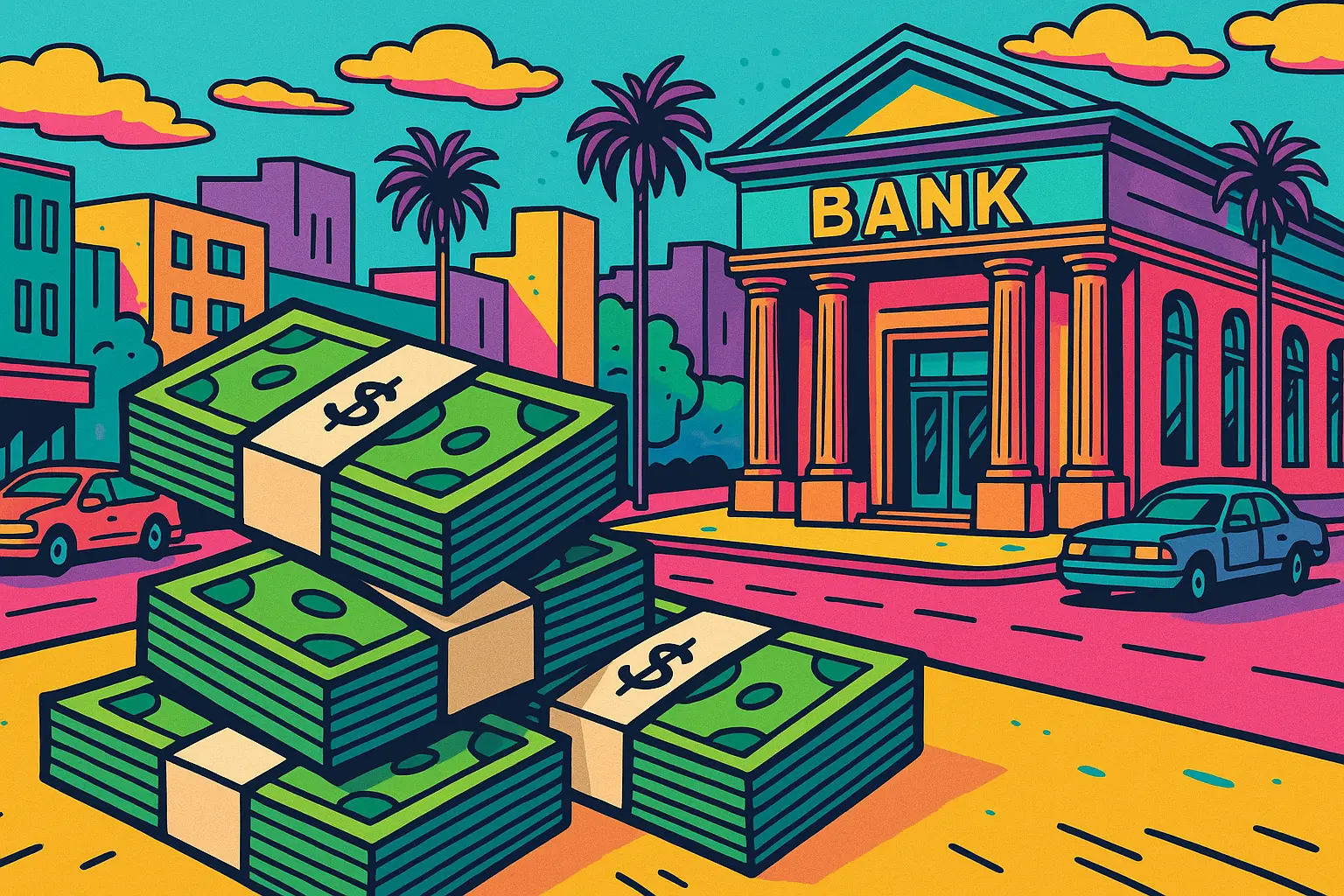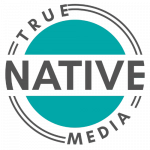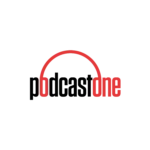How To Get Podcast Sponsors: Downloads Needed and What You Can Earn

Finding podcast sponsors and monetizing your podcast can be a huge goal for content creators. With the right approach to podcast sponsorship, you can transform your passion project into a revenue-generating platform.
In this comprehensive guide, I’m breaking down exactly how to find podcast sponsors so you can successfully monetize your show.
You’ll discover the different types of podcast ads, industry-standard ad rates, CPMs, revenue splits, and essential podcast advertising terminology.
Plus, I’ll direct you to podcast advertising agencies and marketplaces that can help you monetize your podcast effectively.
Whether you’re just starting out or looking to expand your existing sponsorships, this guide will walk you through everything you need to know about finding and securing podcast sponsors in 2025.
Why Podcast Sponsorships Matter
Podcast sponsorships represent one of the most effective monetization strategies for podcasters. When implemented correctly, sponsorships provide:
- Consistent revenue to support production costs
- Funding to improve your podcast quality and reach
- Opportunities to partner with brands that align with your values
- A professional element that enhances your show’s credibility
- Resources to grow your podcast into a sustainable business
However, before diving into sponsorships, there’s an important foundation you need to establish first.
Grow Your Audience Before Trying To Find Sponsors
First things first, you need to invest in your podcast and increase your listenership.
This means using a variety of marketing strategies, including social media, building an email list, writing newsletters, publishing articles, leveraging video, and using paid ads.
I’m a huge fan of writing long-form content and implementing paid ads to grow podcasts. It’s a strategy I’ve used to grow my podcast, Clipped.
Once you get your download numbers up, you’ll have more leverage with sponsors.
Brands are looking to advertise on sizable podcasts. They want to make sure that their investment will give them a return large enough to make it worth their time and energy.
That’s where you need to start.
Before you even begin thinking about finding sponsors for your podcast, you’ve got to get your numbers up. I hate to break it to you, but most podcast advertising agencies and online marketplaces won’t work with you until you have 10k – 20k downloads PER episode, in a 30-day period.
Understanding Podcast Audience Requirements
Let’s be clear about what sponsors expect when it comes to audience size and sponsorship opportunities
- Under 1,000 downloads/episode | Limited – focus on audience growth |
- 1,000-5,000 downloads/episode | Some direct sponsorship opportunities |
- 5,000-10,000 downloads/episode | Increased interest from smaller brands |
- 10,000-20,000 downloads/episode | Most advertising networks become available |
- 20,000+ downloads/episode | Premium sponsorship opportunities |
While these numbers might seem daunting, don’t be discouraged. There are still monetization options for smaller shows, including:
- Affiliate marketing
- Listener support programs
- Premium content models
- Merchandise sales
- Cross-promotion with other podcasts
However, if you’re specifically looking for traditional sponsorships, let’s explore the different types of podcast ads you should understand.
The Types of Podcast Ads
There are 3 main types of podcast ads.
I’m covering these before I dive into sponsorships because I want you to understand your monetization options and be educated about podcast advertising.
Programmatic Ads
Programmatic Ads are created and produced by outside agencies.
They allow brands to create campaigns that connect more accurately and easily with target audiences.
These ads get dynamically inserted into episodes. The buying and selling of these ads happens through automated processes in advertising marketplaces. The easiest way to get started with programmatic ads is through podcast hosting platforms. It’s becoming more and more common for podcast hosts to also offer a programmatic advertising marketplace.
Here are some podcast hosts that offer programmatic ad insertion:
Pros of Programmatic Ads:
- Lower barrier to entry for smaller podcasts
- Minimal effort required after initial setup
- Consistent revenue potential
- No need to manage advertiser relationships
Cons of Programmatic Ads:
- Lower CPM rates than host-read ads
- Less control over which brands appear
- Potential mismatch with your audience
- Can disrupt listener experience if poorly implemented
Host Read Ads
A host-read ad is exactly what it sounds like.
It’s when the host reads an ad for a product or service. In this situation, the host will get sent a script.
They’ll be asked to read the script verbatim or ad-lib and inject some personal experience about using the product or service they’re promoting.
Why Host-Read Ads Typically Perform Better than Programmatic Ads:
-
Leverage the trust built between the host and the audience
-
Feel naturally integrated with the show’s content
-
Offer authentic, personal endorsements
-
Can be tailored to match the show’s tone and delivery style
When negotiating host-read ads, you’ll typically have some flexibility in how you present the sponsor’s message, which can lead to better listener reception and higher conversion rates.
Baked In Ads
Baked-in ad reads happen to live in the middle of the show. These ads are best for podcasts with a live feel that don’t do any editing or shows that live stream.
It all happens on the fly and lives inside the audio file.
The key difference between baked-in ads and dynamically inserted ads is that baked-in ads:
- Remain permanently in the episode
- Cannot be updated or removed later
- Will be heard by all future listeners
- Often feel more natural and integrated
For evergreen content, consider the long-term relevance of any baked-in sponsors, as these ads will continue to be heard long after the campaign has ended.
Creating a Professional Media Kit for Podcast Sponsorships
Before approaching potential sponsors, you need to create a professional media kit that showcases your podcast’s value.
A well-designed media kit should include:
1. Podcast Overview: A compelling description of your show, its mission, and what makes it unique
2. Audience Demographics: Detailed information about your listeners (age, gender, location, interests)
3. Download Statistics: Transparent numbers about your listenership and growth trends
4. Engagement Metrics: Social media following, email subscribers, website traffic
5. Sponsorship Packages: Clear options with pricing and what each includes
6. Past Sponsor Results: Case studies or testimonials from previous sponsors (if available)
7. Host Biography: Information about you and your credibility in your niche
8. Contact Information: How potential sponsors can reach you
Your media kit should be visually appealing, easy to scan, and highlight what makes your podcast an attractive investment for sponsors. Remember, you’re not just selling ad space—you’re selling access to your relationship with your audience.
If you need help with you media kit, hit up my friend Lloyd George.
How To Find Sponsors And Monetize Your Podcast With Ad Agencies
You can always reach out to brands directly and pitch your podcast to them.
I love that DIY hustle.
But it’s also a great idea to connect with a podcast advertising agency.
These agencies oversee the entire ad buying process, handle the negotiations, and act as your partner so that you can focus on content creation.
If you like the idea of partnering with an ad agency, here are a few to look into:
True Native Media

True Native specializes in host-read ads for independent podcasters.
They pride themselves on creating a personalized service for the podcasts on their roster, and for the brands that they work with. TN was founded in 2016 with the goal of helping podcasters grab a bigger piece of the advertising pie.
Requirements: Usually 10,000+ downloads per episode
Commission Structure: Varies, but typically 30-40% of ad revenue
Specialties: Authentic host-read ads, indie podcast focus
Ad Results
Ad Results Media works within Podcasting, Radio, YouTube, and Satellite Radio. They connect brands, listeners, and show hosts through media planning and ad campaign execution.
They’ve got relationships with a plethora of brands in tons of niches. Some of the brands they work with include, BMW, Allbirds, Betterhelp, ZipRecruiter, and FanDuel.
Requirements: Typically 15,000+ downloads per episode
Commission Structure: Varies based on campaign and podcast size
Specialties: Multi-platform campaigns, performance marketing
PodcastOne
PodcastOne is an ad-supported digital audio network.
They focus on content creation, brand integration, and distribution. PodcastOne shows generate a whopping 2.1 billion downloads a year, across their 350 weekly episodes.
They’ve also built out an app and website where people can access free content as well as paywalled content.
Requirements: Often looking for established shows with strong growth potential
Commission Structure: Varies, often includes revenue sharing models
Specialties: Network distribution, premium ad sales, content development
Adopter Media
Adopter Media specializes in strategic media planning, host-read ad copywriting, campaign scheduling, and performance measurement. Since 2016, Adopter Media has placed over 150,000 podcast ads across more than 25,000 shows, totaling over 1,500 successful campaigns.
The agency has worked with brands like Magic Spoon, Füm, Eat Just, and Reel Paper. They focus on building authentic and effective podcast advertising campaigns.
Requirements: Adopter Media collaborates with both established and emerging brands, aiming to create impactful podcast advertising strategies.
Commission Structure: Varies; often includes revenue-sharing models.
Specialties: Host-read ad campaigns, strategic media planning, copywriting, campaign scheduling, performance measurement, and scaling podcast advertising efforts.
Oxford Road
Oxford Road is an independent audio advertising agency. They specialize in performance marketing across podcasts, radio, and streaming platforms and leverage proprietary tools like the Audiolytics™ Ad Scoring Algorithm and the Performance Index to optimize campaigns.
They have helped over a dozen direct-to-consumer brands evolve from startups into global leaders valued at over $1 billion.
Requirements: Oxford Road collaborates with both Fortune 500 companies and emerging brands, focusing on those aiming for significant growth through audio advertising.
Commission Structure: Varies; often includes revenue-sharing models.
Specialties: Podcast advertising, brand safety, performance marketing, audio advertising, streaming platforms, and creator-based video.
How To Find Sponsors and Monetize Your Podcast Through Online Marketplaces
Another way to find podcast sponsors and monetize your show is by joining an online marketplace. Online marketplaces for podcasters are different from full-service ad agencies.
Ad agencies handle everything for you. Online marketplaces require a more hands-on approach.
When you join a marketplace you’re going to have to do all the work. You’ll create a profile, connect your analytics, set your CPMs, and then pitch a list of brand partners. However, some marketplaces are set up for brands to pitch you.
Wouldn’t that be nice?
Online marketplaces do have support staff, but as a podcaster, you’ll manage everything through your accounts dashboard.
You’ll be responsible for communicating with the brand, downloading your ad copy, producing a polished ad read, and running your ad on the correct dates.
Here are some online marketplaces for podcasters:
Libsyn Ads
Libsyn Ads, formally Advertisecast, is an online marketplace that matches brands with podcasters.
It’s an ad-buying and selling platform that acts as the intermediary between the two parties. They oversee the entire campaign process from start to finish. I’ve seen some great monetization opportunities on Libsyn Ads.
Minimum Requirements: Generally 5,000+ downloads per month
Fee Structure: 30% commission on transactions
Special Features: Self-service platform, transparent analytics
Podcorn
Podcorn functions similarly to Advertisecast. But, in addition to host read ads, Podcorn has created additional ways for podcasters to connect with sponsors.
These include product reviews, topical discussions, Q&A’s with employees of the brand, as well as the ability for the podcaster to suggest a creative way to integrate the brand into an episode.
Minimum Requirements: Open to podcasts of all sizes, but more opportunities for larger shows
Fee Structure: 25% commission on transactions
Special Features: Creative sponsorship formats, influencer-style campaigns
Gumball
Gumball connects brands with podcasters and boasts full transparency over every transaction, faster-than-average payments, and a fully customized dashboard to manage due dates, CPM’s, written copy, blackout dates and more.
Headgum owns Gumball, just FYI.
Minimum Requirements: Typically 10,000+ downloads per episode
Fee Structure: 25% commission on transactions
Special Features: Fast payments, customizable campaign management
Crafting Effective Pitches to Potential Sponsors
When reaching out to potential sponsors directly, your pitch needs to be compelling and professional. Here’s a framework for creating effective sponsor pitches:
1. Research the brand thoroughly before pitching
2. Personalize each pitch to the specific company
3. Highlight audience alignment between your listeners and their customers
4. Provide clear value proposition explaining why your show is a good fit
5. Include relevant metrics but don’t make them the sole focus
6. Suggest specific campaign ideas that would work well for their brand
7. Keep it concise- respect their time with a focused pitch
8. Include a clear call to action for next steps
Remember that relationship-building is key. Even if a brand isn’t ready to sponsor you immediately, maintaining professional connections can lead to opportunities down the road.
Also, let’s be real…have ChatGPT craft your pitch.
Understanding Podcast Ad Locations
Ok, so you’ve got the skinny on where to find podcast sponsors.
Now I want to drop a little knowledge on how podcast ad locations work. Once your podcast is big enough to get into the ad game brands are going to purchase spots in different locations within your podcast.
There are three main places that ads go in podcasts. These are, the top of the show, the middle of the show, and the end of the show. Or, as they’re called in the industry, pre-rolls, mid-rolls, and post-rolls.
It’s important to note that more than one ad can go in each position.
A large podcast that brands are chomping at the bit to advertise on could have 2x pre-rolls, 3 mid-rolls, and 1 post-roll. That’s 6 ads running throughout one episode.
As you can see, if you can build a big audience it can be quite lucrative to be a podcaster.

Podcast Ad Placement Strategy
Most podcasters find that mid-roll ads perform best because listeners are already engaged with the content and less likely to skip. However, a balanced approach using all three positions can maximize revenue while maintaining a good listener experience.
Podcast Ad Rates: Calculating CPMs
How much sponsors pay for an ad read depends on the size of your audience and the CPM that has been negotiated. CPM stands for “Cost Per Mille”. Apparently, “mille” is Latin for one thousand.
Strange terminology, right? It’s standard lingo in the industry, so I’m rolling with it.
An easier way to think of CPM is the cost per one thousand downloads. CPMs can vary, but they usually hover around the $20 mark. If a brand buys an ad on your podcast for a CPM of $20, you’re going to get paid $20 per 1,000 downloads.
If your episode gets downloaded 50,000 times, you’re going to make $1,000 for that ad read. 50,000 divided by 1,000 = 50. A $20 CPM x50 = $1,000.
Say your ad is running across episodes that cumulatively get downloaded 20,000 times. You’ll make $400 from that ad read.
20,000 divided by 1,000 = 20. $20×20 =$400.
Are you still with me, or is your head spinning?
Pre-rolls and post-rolls garner a lower CPM. Midrolls are the money spot and typically cost more. The reason for this is because data suggests that people fast forward through ads at the beginning of episodes, and turn episodes off before the end. Thus, skipping the pre-roll and post-roll ad reads.
Industry-Standard CPM Rates in 2025
CPM rates can vary depending on your niche, audience engagement, and overall demand, and while these internet benchmarks listed below are a helpful reference, they often paint an overly optimistic picture.
Speaking from experience, I’ve worked on shows that rank in the top 5% of all podcasts globally—and even then, we weren’t pulling in the rates people talk about online. Our average CPM was closer to $17, not the $25–$50 figures you’ll see floating around.
Also, once your show is priced by one agency, word tends to get around. If you’re being sold at $17 CPM, another agency likely won’t turn around and pitch you at $30. The market kind of sets your rate, regardless of who’s selling your inventory.
So take these benchmarks with a grain of salt. They’re good to know, but not always what’s happening behind the scenes.
Average Podcast CPMs by Category:
-
Technology: $25–35
-
Business/Finance: $25–40
-
Health & Wellness: $20–30
-
Entertainment: $18–25
-
News/Politics: $20–30
-
True Crime: $20–25
-
Sports: $20–25
-
General Interest: $15–25
Remember that these are just averages. I pulled these numbers from Libsyn, Acast and Podchaser.
Podcast Ad Revenue Splits
In almost every scenario the agency or the platform you’re working with to find sponsors is going to take a % of every sale.
I’ve seen 70/30 and 60/40 sponsorship splits during my time working in podcasting. The larger percentage always goes to the podcaster.
Keep these figures in mind when you’re working with an ad partner, if they’re trying to negotiate something way outside these lines, be wary. Sure, things can fluctuate, but 70/30 and 60/40 are really common.
Not feeling the splits? You could always approach brands directly and eliminate a middleman.
Managing Sponsor Relationships for Long-Term Success
Once you’ve secured sponsors, maintaining positive relationships is crucial for ongoing success. Here are best practices for managing sponsor relationships:
1. Deliver what you promise – run ads as agreed and on schedule
2. Provide performance reports – share relevant metrics after campaigns
3. Gather listener feedback- collect information about how ads are received
4. Be proactive with communication – address any issues immediately
5. Suggest improvements – offer ideas to enhance future campaigns
6. Express appreciation – thank sponsors for their support
7. Seek testimonial – request feedback you can use in your media kit
8. Look for renewal opportunities – discuss extending successful campaigns
Building strong relationships with sponsors can lead to higher rates, longer contracts, and referrals to other potential sponsors. Treat each sponsor as a valued partner in your podcast’s growth.
How Difficult Is It To Find Podcast Sponsors?
You need a significant amount of downloads before brands will be interested in sponsoring your show.
It’ll take 10k -20k downloads per episode, in a 30-day period, to open advertising conversations.
This is why I wrote an article on how to grow your podcast. You need to put a ton of work in on the front end and grow your show before your eyes fill up with money signs.
If you can get your downloads up into that range you’re going to get a lot of opportunities to make money from your podcast. Hell, you might even be able to become a full-time content creator.
Building a Sustainable Podcast Sponsorship Strategy
Finding podcast sponsors is a journey that begins with building a quality show and growing a dedicated audience. While the threshold of 10,000-20,000 downloads per episode may seem challenging, focusing on consistent growth and exploring multiple monetization avenues can help you create a sustainable podcast business.
Remember these key points as you develop your sponsorship strategy:
1. Focus on audience growth first – quality content and marketing are your priorities
2. Understand the different ad types and which work best for your format
3. Create a professional media kit that showcases your podcast’s value
4. Explore both agencies and marketplaces to find the right partners
5. Set fair rates based on industry standards and your unique audience
6. Maintain excellent relationships with sponsors for long-term success
7. Diversify your revenue streams beyond just sponsorships
With persistence, professionalism, and strategic planning, you can successfully monetize your podcast through sponsorships and create a sustainable business around your passion for podcasting.
Connect With The Podcast Haven:
More Blog Posts To Help You Crush Your Content Goals:
- Podcast Name Ideas: Best Practices For Naming Your Show
- Podcast Production Agency: The Complete Guide To Choosing The Right Partner For Your Show
- YouTube Creator Burnout: How To Algorithm Impacts Mental Health and What To Do About It
- E-E-A-T For Content Creators: Grow, Monetize, and Build Trust With A Small Audience
- How To Use ChatGPT Prompts For Content Creation In 2025







